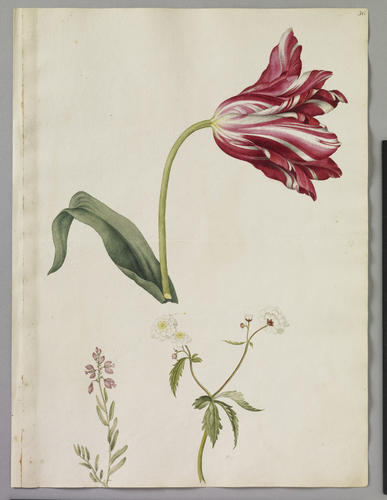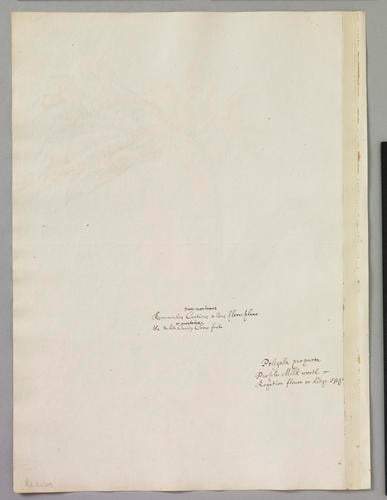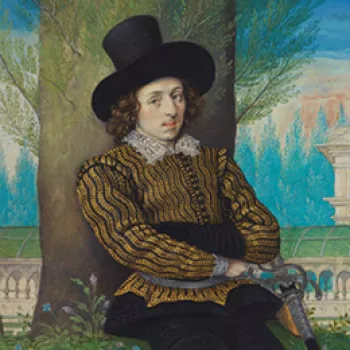Unnamed tulip (Tulipa gesneriana L.) with common milkwort (Polygala vulgaris L.) and white buttercup, double cultivar (Ranunculus aconitifolius L. 'Pleniflorus') c.1680
Watercolour and bodycolour | 45.9 x 33.0 cm (sheet of paper) | RCIN 924303

Alexander Marshal (c. 1620-82)
Unnamed tulip (Tulipa gesneriana L. ) with common milkwort (Polygala vulgaris L. ) and white buttercup, double cultivar (Ranunculus aconitifolius L. 'Pleniflorus') c.1680


-
A watercolour of three flowering plants, including a white buttercup Ranunculus aconitifolius, a purple milkwort and a striped tulip. Inscribed in pen and ink at the upper right corner of the sheet, 36. Folio 36 of Alexander Marshal's florilegium, begun in about 1650 and added to until his death. The 159 sheets show plants and flowers of English gardens over the course of a year. Manuscript florilegia were common in continental Europe in the seventeenth century, but this flower-book is apparently unique in English art of the period. The tulip, first introduced in Europe through Turkey in the mid-sixteenth century, held a particular fascination for seventeenth-century plantsmen. The 'flamed' appearance of the flower, caused by a virus spread by aphids, means that the petals take on intricate striped patterns that were highly prized at the time.
Provenance
Presented to George IV by John Mangles of Hurley, Berkshire
-
Creator(s)
-
Medium and techniques
Watercolour and bodycolour
Measurements
45.9 x 33.0 cm (sheet of paper)
Other number(s)
RL 24303








